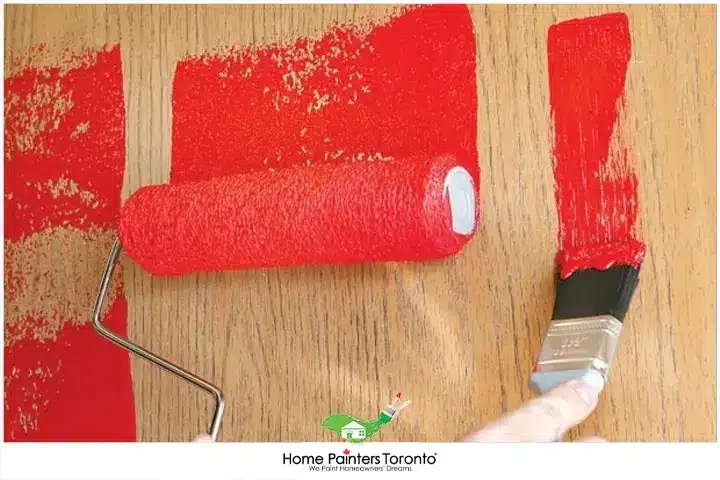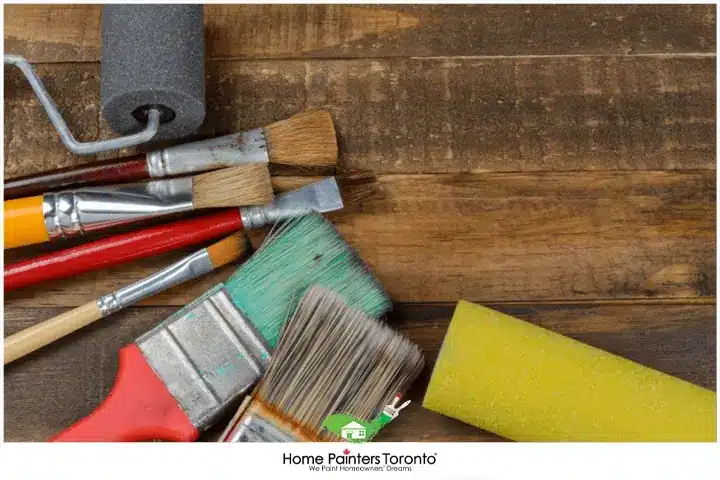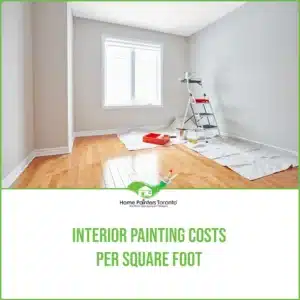
If you search on the internet for types of painting brushes, you may be disappointed to learn that most of the sites are writing about artistic brushes. While painting is definitely an art, the types of painting brushes you need are for your interior home. This is your ultimate artistic expression, coming full circle.
It can be overwhelming at first to figure out what types of painting brushes you specifically need for certain areas of your interior but do not fret. Once you learn the basics, choosing the right painting brushes can be as easy as 1, 2, or 3.
Brush Styles
It is important to first learn about brush styles before anything else. These styles are used for specific sections of your home. You do not want to end up working with the wrong tool for a certain area of your interior. These styles include:
- Wall: the name is pretty self-explanatory, this style is used for vast surfaces
- Angle Sash: the bristles are on an angle for the user to tackle trims and line the ceiling up with the walls
- Flat Sash: again, this name is self-explanatory, use this style for flatter surfaces
- Thin Angle Sash: For surgeon painters, this intricate brush is used for trimming corners and edges, it requires great skill to use this style
If you are confident enough to use a Thin Angle Sash, then all the power to you; if you are a novice and want to learn more, there are several tutorials online on how to use these brush styles properly.
Different Types of Brushes for Painting Walls
While there are all sorts of different brushes out on the market, you want to choose quality over quantity. Depending on what you need, all types of painting brushes are not the same. Go for top-of-the-line brands that have a proven record, do not go for a cheaper alternative, as it could end up costing you more in the long run.
- Polyester Brushes: these brushes are made specifically for latex paint, the finish it provide is a perfect combination of slickness while making sure the area is balanced
- Natural Bristle Brushes: best used for oil-based paints, these brushes spill at the end intentionally for the ability to hold more paint per stroke.
- Blended nylon/polyester brushes: Think of these brushes as a hybrid of the two mentioned above; they are compatible with all latex paints and are thought to last longer than most other brushes.
Brush Sizes
Paint companies like Sherwin-Williams and Benjamin Moore use their own widths and inches when determining the size of their paintbrushes. Remember, the types of painting brushes you need depend on what you are painting. For an easier grasp of brush sizes:
- 1”-2” paintbrushes should be used for tiny scale makeovers such as trim, and windows, and if you like to paint over model toys, and action figures as well
- 3” paintbrushes should be used for kitchen, interior doors and cabinets
- 4” are the cream of the crop; use these brushes for walls, ceilings, floors, and anything that is a bigger surface than normal
Brush End Types
Think of these types as the ends of a pencil or pen. It is a little detail not noticed by the average painter ( not you) and can make all the difference in the world when selected properly. They can be different depending on what brand you choose from, but all types of painting brushes generally follow these categories:
- Angeled Brush: Bristles are formatted in a way to make the job of trimming windows and door frames a lot more simple and convenient for the user
- Square Trim Brush: Shaped like a square at the end, these bristles are specifically constructed for flatter surfaces
- Chisel Trim Brush: These bristles are angled to perfection, like the Thin Angle Sash. This brush end is made for precision, use it for trimming around corners/edges
Mastering the Technique: Brush Strokes and Effects for House Painters
For the professional house painter, brushes aren’t just a means to apply paint; they are a vital tool to manipulate texture, shadow, and hue to create a refined finish. The purpose here isn’t as varied as in artistic painting, but the need for expertise is just as paramount.

Understanding the Brush Stroke
Brush strokes refer to how the brush is used to apply paint to the surface. The considerations that go into choosing the direction and pressure of a brush stroke include the type of paint, the specific brush in use, and the desired appearance of the painted surface.
Straight Brush Stroke
The straight brush stroke is the most common in house painting. It involves applying paint with the brush at a stroke angle of 45 degrees to the wall and finishing off with a light stroke in a single, unidirectional movement. This technique offers a uniform finish and is largely used in painting large surfaces.
Crosshatching Brush Stroke
Crosshatching involves applying paint in a crisscross pattern. The brush strokes intersect each other, creating a hatch-like pattern. This is particularly effective when applying primer to raw surfaces. It ensures that the paint seeps into the pores of the surface for a more robust bond.
Feathering Brush Stroke
Feathering is a technique in which the house painter applies light pressure to the brush, allowing the bristles to gently glide over the surface. This technique is crucial in situations where the painter needs to blend fresh paint seamlessly with the existing coat. It’s a skill that takes some practice but, once mastered, can deliver impressive results.

Exploring the Brush Stroke Effects
Smooth Finish
Using a high-quality brush and the appropriate stroke technique can produce a smooth, unblemished finish – a desirable feature for many homeowners. It’s essential to avoid excess paint on the brush, evenly distribute the paint, and maintain a consistent stroke direction to prevent brush marks in the final finish.
Paint Texturing
In certain situations, house painters may want to create a texture using a specific brush and stroke technique. Stippling (applying paint using a dabbing motion) and combing (dragging a comb-like tool through wet paint) are techniques often used to add interest and depth to a space.
Paint Faux Finish
Brush strokes play a significant role in the creation of faux finishes. Techniques like colour washing, dragging, and strié rely heavily on the house painter’s command over the brush stroke to mimic certain textures or looks, such as aged paint or fine fabric.
Mastering brush strokes and their effects requires practice and understanding. However, the results can significantly uplift the aesthetic appeal and overall value of the home. By researching different techniques, testing them, and learning from each experience, the forward-thinking house painter can develop a comprehensive toolkit of skills that accommodate every client’s unique preferences and demands.
If you decide to hire a contractor, they should be using all the types of painting brushes mentioned in this piece. Now that you know about the proper terms and identification of brushes, ensure that your hired painting service uses the right tools at the right time, you would be surprised, but then again, it is 2024; nothing may scare you anymore.
More Interesting Blogs Related to
“Types of Painting Brushes”
If you’re thinking of doing some home interior painting but don’t want to do the work yourself, let our interior painters help! Even if you are undecided, professional house painters can help you with any problems or questions you may have. If the work involved sounds like it involves too much time and energy to do yourself, call 416.494.9095 or email [email protected] for a FREE quote. And don’t forget to follow us on all our social channels below as well!





